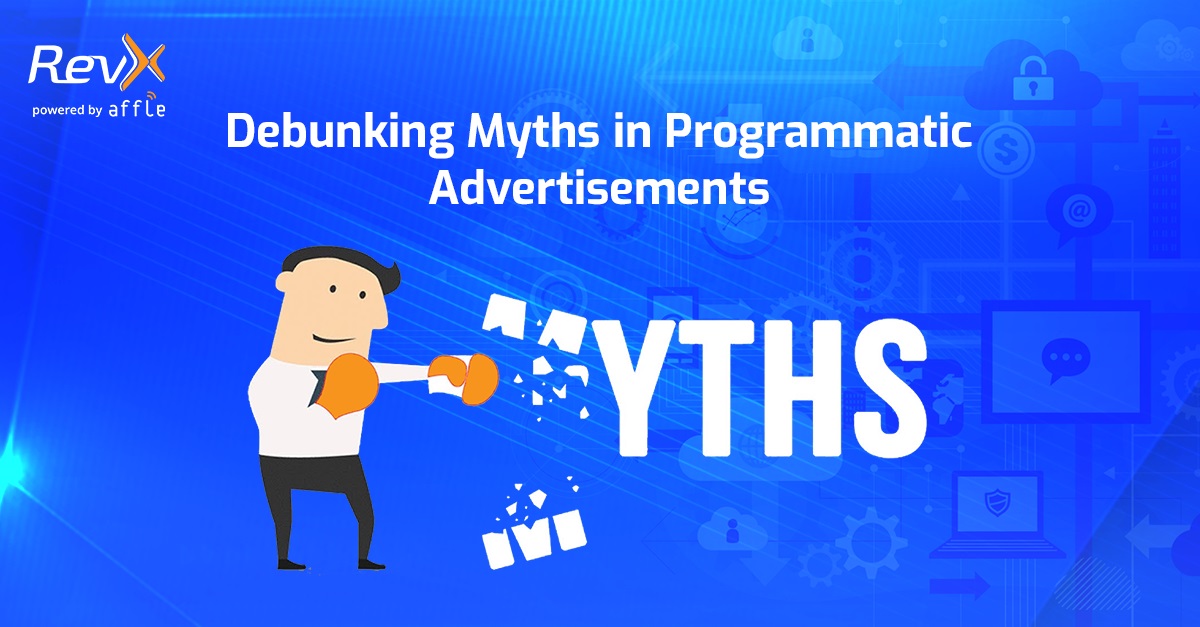Programmatic Advertisements has been nothing short of a revolution for online advertising. The automation of buying and selling of ad impressions over the internet has allowed businesses of almost all statures to expand their reach as well as be more precise with their targeting. Programmatic comes with a number of benefits that make your ad campaigns perform better and you drive better Return on Ad Spend (RoAS).
Even though programmatic ads have been here for decades, the exact knowledge among advertisers is not-so-universal. There have been several myths around the technology that are stopping advertisers from leveraging it to their advantage. In this article, we are discussing the top 5 myths around programmatic advertising along with their truth.
Myth 1: Programmatic is Too Complex to Handle
It’s a myth that survives only till the advertiser tries their hand at programmatic advertising for the first time. As soon as you start utilizing the programmatic ads, you would realize it is a lot simpler than other available alternatives.
Probably the myth about its complexity spread riding on numerous options and features that come with it. With several parties involved, such as Demand Side Platforms (DSP’s), Data Management Platforms (DMP), Supply Side Platform (SSP), Ad networks, and other parties, it may appear to be aa maze. However, as an advertiser, you only have to work on just one platform i.e., DSP, which is an interface to simplify the process of buying ad impressions.
Programmatic ads are so easy to run that you can easily find many single-person companies utilizing it. Depending on the number and the size of the campaigns, you may require different sizes of the workforce to take care of programmatic ads. At the same time, tracking the performance of those campaigns is always going to remain an easy task for you.
Myth 2: You Pay for Impressions or Clicks Only
Cost per Click (CPC), which charges you for every click on the ad and Cost per Mille (CPM), which charges you for every thousand impressions on the ads are among the most popular payment models. However, they are not the only payment models available.
Depending on your campaign goals, you can choose custom KPI metrics to pay for the programmatic campaigns. For example, a fintech can pick the first transaction to be the KPI, or an OTT app can opt for the start of a free trial. Similarly, different business models can pick the KPIs that relate directly to their campaign goals.
The challenge remains with your choice of ad partner. Not every ad partner offers the option of choosing custom KPI metrics. You can pick Demand Side Platform, such as RevX, that runs campaigns on downstream metrics relying on the pushbacks your app shares.
Myth 3: User Acquisition and Retargeting are Different Strategies
User acquisition (UA) is about getting new users to your app and website. Retargeting is about reaching those users who have visited your app/website or have shown interest in the products that are selling. Basically, they are different levels of your funnel. However, your UA and retargeting campaigns don’t have to separate entities.
To drive better results, it is necessary that you are keeping them in the sync. So, your retargeting campaign is able to utilize the data from the user acquisition campaign, you would be able to drive optimum results as you have critical data point about what works for which users.
Myth 4: First-party Data is Not Meant for Ad Partners
Everyone understands that the first-party data that an advertiser has is of great value. Letting it wrong hand can hurt your business. However, utilizing this valuable data in the right way can be equally rewarding as well.
Utilizing the data of the existing customer with the right choice of ad partner can help target them better by mapping with their DMPs, which may already have data points of those users. It enhances opportunities for upselling and cross-selling. Moreover, it increases the effectiveness of lookalike audience modeling.
Myth 5: You Never Know Where and How Your Ads Feature
Just like the choice of payment model, it is also a limitation applicable to some ad partners. Some of the DSP, like RevX, offers transparent reporting on various levels, including media insights, creative, audience level. Such reports ensure that your campaigns are brand safe and chances of fraud are reduced to the least.
So, it is essential to consider the level of transparency that your ad partners offer to you. The more transparent it is, the better the ad quality you are going to deliver.
Wrapping Up
Programmatic advertising brings a bunch of benefits for your marketing needs. However, any limitations with its knowledge can curb your potential of leveraging it to the fullest. We hope this article helps you understand the programmatic ads better.

